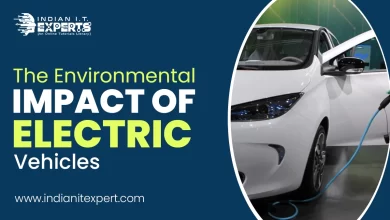What is Next for the Word of Digital Currency?

Digital currency is a term that is familiar to some people and unfamiliar to others. But if you aren’t aware of it, you must get familiar with it because it has the potential to change our view on money. The recent rise in Ethereum (ETH), Bitcoin (BTC), and various other cryptocurrencies that exist in digital format only, has led global national banks to research the working of these national digital currencies. So, in today’s blog, we will shed light on the topic “What is next for the world of digital currencies?” So, without wasting further time let’s get started!!
Table of Contents
What is digital currency?

The type of currency that is available exclusively in the digital format is known as digital currency. Most of the countries’ financial systems are already dominated by the digital currency. The main difference between digital and electronic currency is that it is already in your bank accounts and it does not have a physical form.
You can use an ATM to transfer your electronic currency into physical form but the same can’t be done in the case of digital currency. You need a digital medium to exclusively transfer your digital currency because it can’t leave your computer system.
There are 3 types of digital currencies:
- Cryptocurrency
- Stablecoins
- Central Bank Digital Currency (CBDC)
Also read: 5 best ways to make money online through Internet marketing
What is blockchain technology?

Blockchain is a technology that provides a cryptocurrency foundation and it is commonly used by digital currencies as a distributed ledger. There are 9K+ cryptocurrencies available, according to CoinMarketCap.
What is the present scenario for Digital currency?
These are the following points regarding the present scenario for Digital currency:
- Blockchain is highly desirable for stablecoins, but governments are afraid of losing control to private stablecoin issuers.
- Governments prefer CBDCs (central bank digital currencies) for their control and backing, while private institutions and retailers prefer private stablecoins.
- Cryptocurrencies offer financial freedom from government censorship, which is appealing to some people.
- The market for cryptocurrencies in India is largely driven by the value accrual/investment perspective.
- Cryptocurrency tokens represent ownership of government assets in digital form, while crypto tokens represent a small portion of the network-based economy.
What is the Digital currency future?

These are some following points regarding the Digital currency future:
- The value of an asset or network is determined by the number of users and institutions.
- CBDCs (central bank digital currencies) are similar to the rupee, digital rupee, and e-rupee, but they differ in terms of custody of assets and the network.
- CBDCs are primarily being piloted for institutional purposes and wholesale settlements in India, but the retail version could surpass UPI’s reach and bring immense strength to CBDCs.
- China is one of the earliest adopters of CBDCs and is already seeing benefits, including being the dominant mode of value exchange in parts of Africa.
- CBDCs and networks like Bitcoin are vying for SWIFT users, while UPI is competing with VISA and PayPal for market share in global transactions.
- UPI is currently being used most by MSMEs and retail sectors, but it could also be used by top institutions and governments for significant payments.
- CBDCs are well-suited for this purpose because they offer compliance, backing, regulation, and reconciliation.
- CBDCs could offer a more efficient and secure way for governments and institutions to make large payments.
Also read: 10 Best Ways to Make Money with Digital Marketing
Development and problems regarding digital currency

These are some following points regarding the Development and problems of digital currency:
- The collapse of UST stablecoin has exposed structural vulnerabilities in stablecoin designs.
- Governments and regulators worldwide are becoming more cautious about stablecoins.
- The USA is leading the way in regulating stablecoins, while other countries are testing their own versions.
- China has already launched its own stablecoin and is ahead in the currency dominance race.
- The UK and Singapore are taking a nimble approach to pilot different strategies for stablecoins and DeFi.
- India has not yet decided on its final position on digital currencies, but pilot projects are underway.
- Collaborations with firms like Polygon are beneficial for governments and citizens.
- The Indian rap and music scene is benefiting from using INR onramps to purchase NFTs.
- The younger generation in India is receptive to digital life, assets, and currencies.
- The average age of cryptocurrency users in India is 24, which shows a high level of acceptance among young people.
Also read: What is Google AdSense and How to Make Money with It?
What can be done for more improvement?

These are points regarding the further improvement in digital currency:
- Blockchain can help private businesses and governments reduce the cost of money operations by 4-5 times.
- There is global competition for CBDCs (central bank digital currencies).
- The goal of CBDC competition is to establish and spread the dominance of a nation’s CBDC across multiple geographies.
- The first step to achieving this goal is to make CBDCs as ubiquitous as possible.
- Savvy consumers have already adopted digital currencies, but it is unclear how they will respond to more regulated CBDCs.
- The success of CBDCs will depend on how well they can balance the need for regulation with the need for convenience and innovation.
Conclusion
Digital currency infrastructure providers have a golden opportunity to grow their businesses rapidly. However, they must work with regulators and comply with regulations to ensure the long-term success of the industry and the economy.
If you want to pursue any computer course professional diploma, diploma and certificate course in computer then, you can do it from our DOTNET Institute. We provide computer courses both at online and offline mode at affordable prices. You can check it by clicking on the given link.
Also watch:
FAQs
1.What is the main difference between digital currency and cryptocurrency?
The main difference between digital currency and cryptocurrency is that cryptocurrency is a type of decentralized digital currency.
2.What are the main types of digital currencies?
There are 3 types of digital currencies:
• Cryptocurrency
• Stablecoins
• Central Bank Digital Currency (CBDC)
3.Where to buy digital currencies from?
You can buy digital currencies such as stablecoins and cryptocurrencies from the world’s existing crypto exchanges.
4.What is the process of creating digital currencies?
CBDCs can only be created and authorized by the world government. Private institutions can’t create CBDCs.




